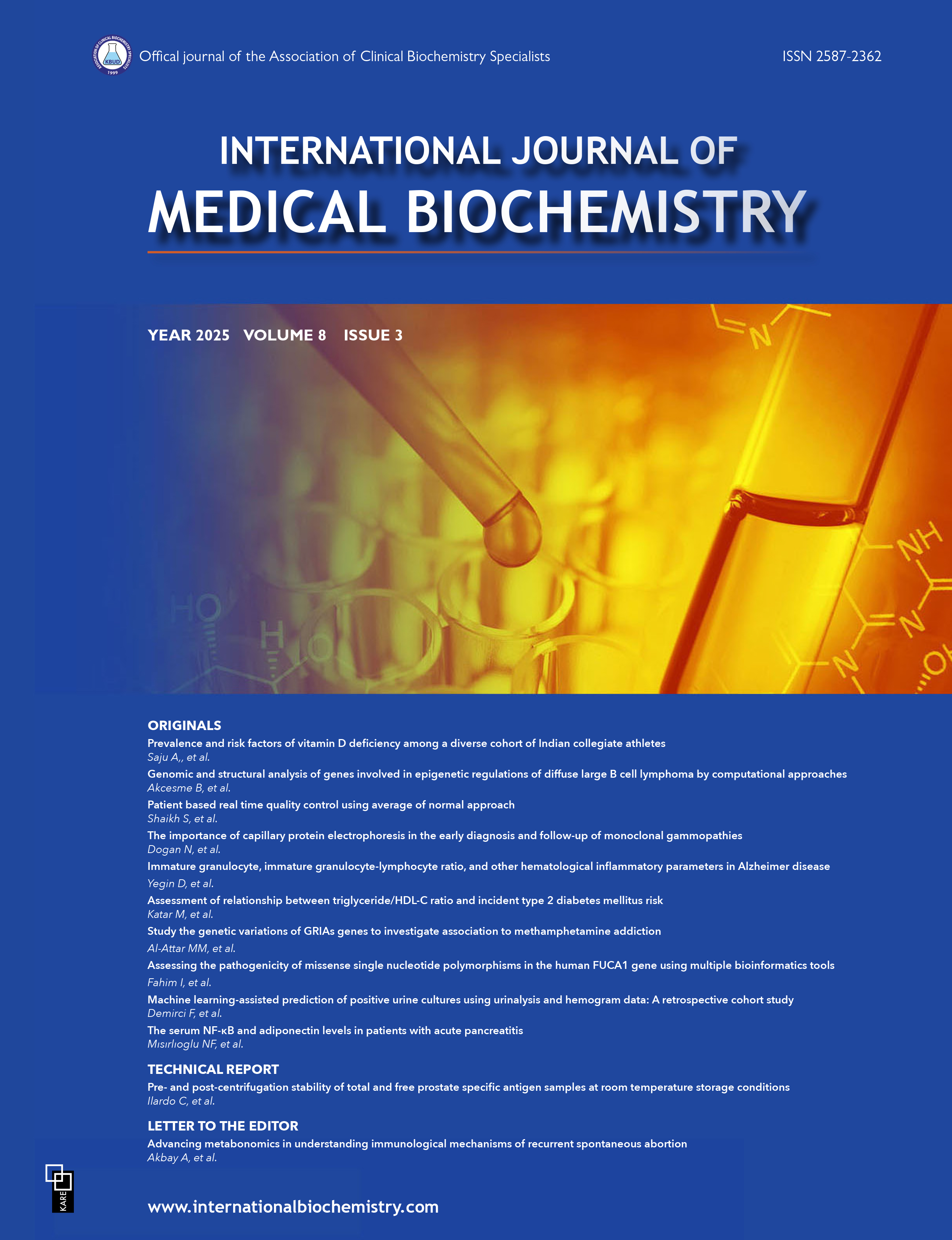Comparison of stability of seven biochemistry analytes in serum separator and plasma tubes
Esin Avcı, Süleyman Demir, Rukiye Nar, Kadriye AkpınarDepartment of Medical Biochemistry, Pamukkale University Faculty of Medicine, Denizli, TurkeyINTRODUCTION: The aim of the present study was to compare the stability of 7 routine analytes using a BD Vacutainer Barricor plasma blood collection tube, a BD Vacutainer SST (Becton Dickinson and Company, Franklin Lakes, NJ, USA) and a Vacusera SST ((Disera A.S., Izmir, Turkey).
METHODS: Five mL blood samples from 60 volunteers were collected into the 3 tubes. Glucose, urea, creatinine, lactate dehydrogenase (LD), sodium (Na), chloride (Cl) and potassium (K) levels were analyzed at 0, 4, 8, and 12 hours on a Cobas 8000 analyzer ((F. Hoffmann-La Roche Ltd., Basel, Switzerland). Bias and bias% results were calculated and compared to clinically acceptable limits (CAL).
RESULTS: Intraclass correlation results revealed excellent agreement in the 7 chemistry analytes between the 3 tubes (0.863-1.000). The CAL for Cl, creatinine, glucose, K, LD, Na and urea are 3 mmol/L, 10%, 0.3 mg/dL, 10%, 0.5 mmol/L, 20%, 3 mmol/L and 2mg/dl, respectively. At the 12th hour, there was a difference observed in glucose between Barricor-SST and Barricor-Vacusera SST were 10.06 mg/dL (11.38 %) and 11.14 mg/dL (-12.76%). Analytical coefficient (CV) of variation results for glucose, LD, creatinine, urea, Na, K, and Cl were 3.22%, 5.80%, 5.28%, 3.90%, 2.00%, 1.95%, and 1.37% respectively.
DISCUSSION AND CONCLUSION: Although the stability of all 7 analytes was within the CAL during a 12-hour period, clinically different results were obtained. In terms of stability evaluation, the use of plasma might be preferable in clinical laboratories. The routine chemistry analytes studied were within the clinically acceptable range in both plasma and serum specimens, but validation and estimation of reference intervals for plasma tubes are needed.
Manuscript Language: English






